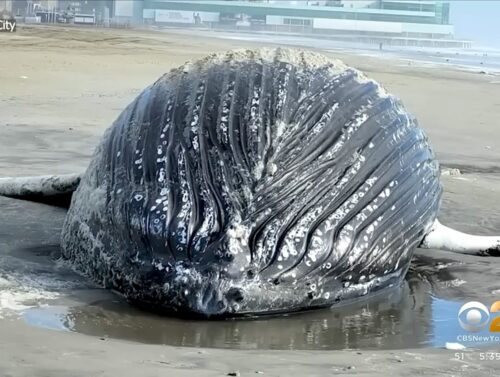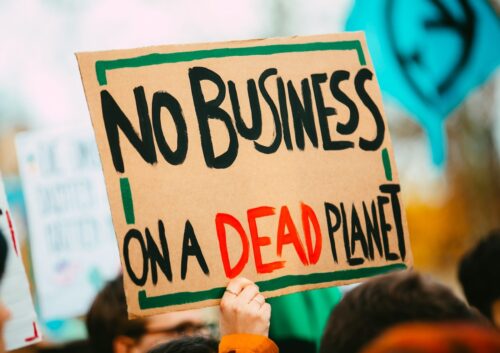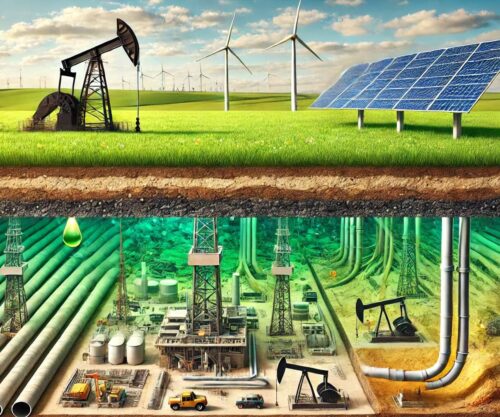
As COP30 kicks off this week in Belém, Brazil, I can’t help but reflect on one of the key moments that soured me on the climate movement entirely. [some emphasis, links added]
For years, I’ve watched as well-intentioned environmentalism morphed into a crusade that elevates hypothetical future scenarios over the immediate, tangible suffering of billions.
This conference, nestled in a city where raw sewage flows openly into waterways, exemplifies the ultimate hypocrisy: global elites, Western scientists, and politicians jetting in—often on private planes—to lecture the world on reducing emissions, while ignoring the far more pressing environmental crises right under their noses.
It’s this disconnect that pushed me away from the movement I once embraced as an Earth sciences professor.
Today, in exile from academia for daring to question the alarmist narrative, I’m more convinced than ever that the legacy of climate activism will be one of neocolonialism disguised as virtue, denying the developing world the infrastructure and cheap, reliable energy that propelled the West forward, all in the name of uncertain futures.
What really turned me off was realizing that billions, particularly in sub-Saharan Africa, are condemned to decades of unnecessary hardship. We’re telling them to forgo fossil fuels and modern infrastructure because of CO2 emissions, even as they lack basic sanitation, clean water, and electricity.

This isn’t environmentalism; it’s a form of control that prioritizes modeled weather in 2100 over people dying today from preventable diseases.
The climate movement has killed practical environmentalism by diverting trillions from real solutions to virtue-signaling gestures. And Belém is a stark case study.
The Sewage Crisis in Belém: A Far Greater Threat Than Greenhouse Gases
Belém, the host city for COP30, with a population of over 1.4 million, has one of the worst sanitation records in Brazil.
According to recent data from the Instituto Trata Brasil, a nonprofit focused on sanitation, a staggering 80.7% of residents have no access to a sewage network.

Other reports confirm this dire situation: only 20% of the population has household sanitary sewage coverage.
This means that for the vast majority, raw sewage is dumped directly into open canals and rivers, including those feeding into the Amazon basin, a significantly more dangerous environmental problem than greenhouse gases.
Imagine attending a global climate summit where delegates discuss showering less or switching to induction stoves and heat pumps, while outside, open sewers run through neighborhoods, contaminating waterways with human waste.
Photos from Belém’s favelas and canals paint a grim picture: in areas like the Terra Firme neighborhood, the Tucunduba canal is littered with garbage and raw sewage.

This raw sewage, often mixed with solid garbage due to insufficient waste collection, is directly discharged into the nearest natural waterways, which include rivers, lagoons, and coastal areas.
The health impacts of this raw sewage discharge are devastating and immediate.
Exposure to untreated sewage in waterways can cause a range of illnesses, including gastroenteritis from swallowing contaminated water, leading to diarrhea, vomiting, and dehydration. Skin infections, ear and eye irritations, and respiratory issues arise from contact or inhalation.
More severely, it spreads waterborne diseases like salmonella, hepatitis A, dysentery, cryptosporidiosis, and even hookworm, which causes rashes, anemia, and chronic fatigue.
In ecosystems, it elevates nutrients, leading to algal blooms, depletes oxygen, kills aquatic life, and introduces endocrine disruptors and heavy metals that bioaccumulate up the food chain.
For communities relying on surface water, this means literally ingesting pathogens, exacerbating malnutrition and cancer risks.
Yet, as elites convene to pat themselves on the back for emission pledges, they’re blind to this.

It’s privilege personified: flying into a poor city near the Amazon to demand sacrifices from those already suffering, without addressing the sewage crisis that’s killing people now.
Echoes in the United States: From Lowndes County to the Black Belt
This isn’t just a developing world issue—it’s happening right here in the U.S. Just a few hours south of Tuscaloosa, Alabama, where my youngest son was born, lies Lowndes County, Mississippi, a stark reminder that we’re not immune.
In this predominantly Black county, estimates show that as many as 80% of residents lack reliable sewage systems, with many resorting to “straight piping”—dumping raw sewage directly from homes into ditches and local waterways.
In the Southeast, where surface water is the primary drinking supply, this means communities are essentially drinking their own excrement, fueling outbreaks of hookworm (with over 34% testing positive in some studies) and other parasites.
Lowndes isn’t alone. Across the rural South, particularly in the Black Belt and Appalachia, sanitation gaps persist.
Counties like Greene County, Alabama; Bolivar County, Mississippi; Halifax County, North Carolina; Duplin County, North Carolina; and Dona Ana County, New Mexico, report high percentages without access to centralized sewage or functioning septic systems.

Nationwide, over two million Americans lack running water or wastewater services, with rural households comprising more than half. And in major metro areas like Birmingham-Hoover, Alabama, household sewer connectivity is as low as 69.2%.
While we spend trillions virtue-signaling about the [weather in the 2100s], these communities suffer today. It’s the same hypocrisy: prioritizing CO2 over human suffering.
What practical environmentalism would do (today)
- Build sewers, not slogans. Expand collection and treatment in Belém and similar Amazonian cities, where coverage hovers around 20%, and treatment is near zero. Track disease reductions as the success metric.
- Fix U.S. wastewater poverty. In places like Lowndes County, fund engineered solutions for clay soils (e.g., cluster/decentralized treatment, STEP systems).
- Energy pragmatism. Reliable, affordable energy underwrites every sanitation upgrade—pumps, lift stations, treatment aeration all run on power. Blocking development in Africa or the Amazon on carbon grounds keeps people in pathogen exposure longer, with real, measured harm now.
Neocolonialism in Green Clothing: The True Legacy
Denying the developing world access to the infrastructure that built our prosperity isn’t progress—it’s neocolonialism masquerading as virtue.
Billions in sub-Saharan Africa and beyond will endure prolonged poverty because we’re obsessed with emissions over equity.
But this isn’t limited to distant shores; right here in America, marginalized communities in places like Lowndes County face the same neglect, with raw sewage contaminating their lives while trillions are funneled into climate initiatives that ignore these immediate crises.
Even average Americans are burdened by policies that drive up energy costs and restrict reliable power sources, all in the pursuit of emission reductions that offer little tangible benefit today.
Had we invested in common-sense energy and sanitation infrastructure—regardless of CO2 levels—lives would improve now, from African villages to American rural counties.
Instead, the climate movement’s legacy is clear: it places future emissions above present suffering, harming the global poor and underserved Americans alike.
Top photo shows a Belém favela next to a waterway, via AP/YouTube screencap
Irrational Fear is written by climatologist Dr. Matthew Wielicki and is reader-supported. If you value what you have read here, please subscribe and support the work that goes into it.
Read rest at Irrational Fear


















